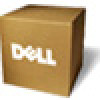Dell PowerConnect FCS624S Web Management Interface User Guide - Page 49
Designated Cost, Designated Bridge
 |
View all Dell PowerConnect FCS624S manuals
Add to My Manuals
Save this manual to your list of manuals |
Page 49 highlights
Monitoring RSTP 3 Edge Port Role State Designated Cost Designated Bridge Indicates if the port is configured as an operational Edge port: • T - The port is configured as an Edge port. • F - The port is not configured as an Edge port. This is the default. The current role of the port: • Root • Designated • Alternate • Backup • Disabled For more information, refer to "Bridges and bridge port roles" of PowerConnect B-Series FCX Configuration Guide. The port's STP state. The state can be one of the following: • BLOCKING - STP has blocked Layer 2 traffic on this port to prevent a loop. The device or VLAN can reach the root bridge using another port, whose state is FORWARDING. When a port is in this state, the port does not transmit or receive user frames, but the port does continue to receive STP BPDUs. • DISABLED - The port is not participating in STP. This can occur when the port is disconnected or STP is disabled on the port. • FORWARDING - STP is allowing the port to send and receive frames. • LISTENING - STP is responding to a topology change and this port is listening for a BPDU from neighboring bridges in order to determine the new topology. No user frames are transmitted or received during this state. • LEARNING - The port has passed through the LISTENING state and will change to the BLOCKING or FORWARDING state, depending on the results of STP's reconvergence. The port does not transmit or receive user frames during this state. However, the device can learn the MAC addresses of frames that the port receives during this state and make corresponding entries in the MAC table. The best root path cost that this port received, including the best root path cost that it can transmit. The ID of the bridge that sent the best RST BPDU that was received on this port. PowerConnect B-Series FCX Web Management Interface User Guide 39 53-1002268-01















